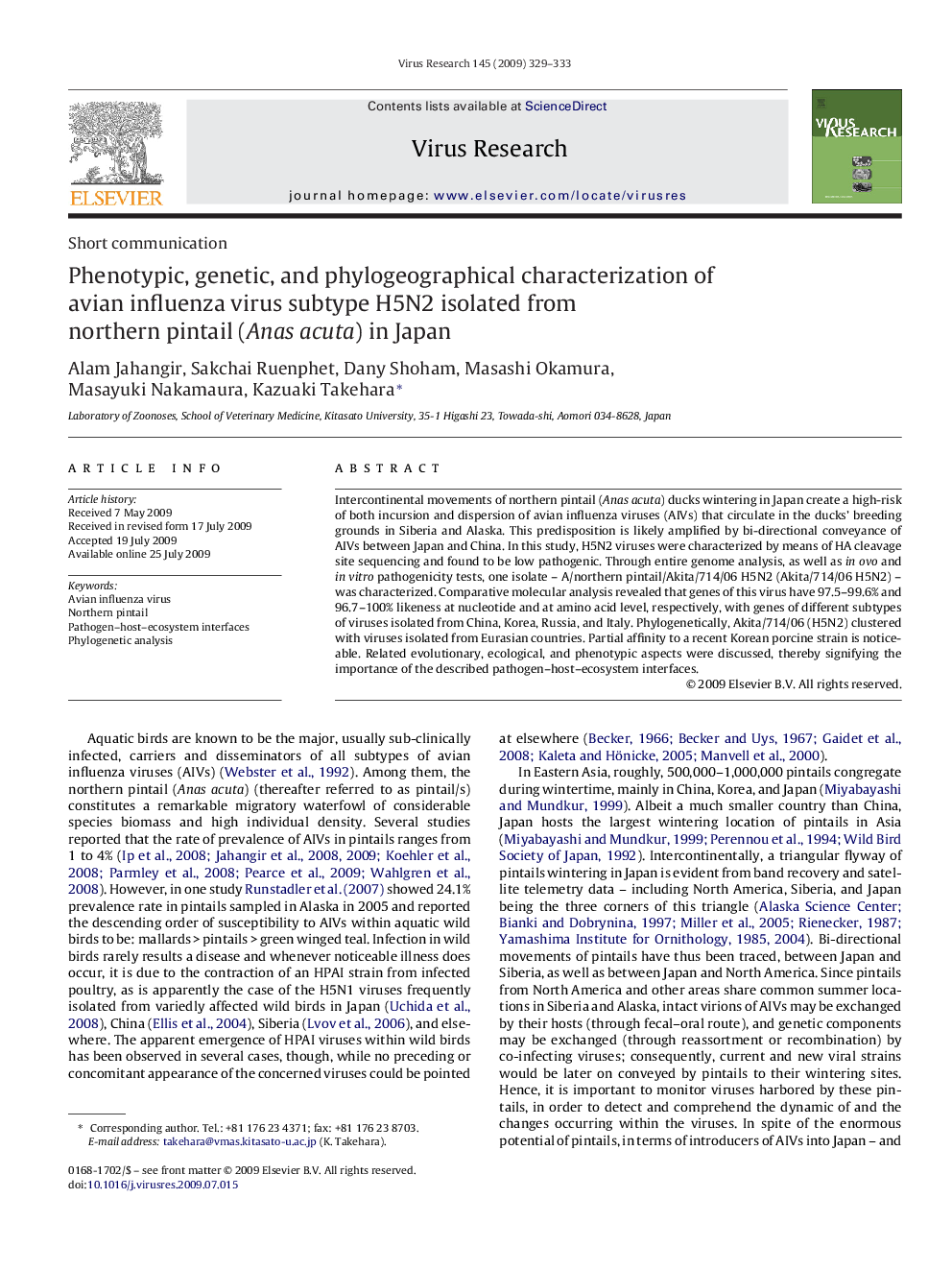| Article ID | Journal | Published Year | Pages | File Type |
|---|---|---|---|---|
| 3429741 | Virus Research | 2009 | 5 Pages |
Intercontinental movements of northern pintail (Anas acuta) ducks wintering in Japan create a high-risk of both incursion and dispersion of avian influenza viruses (AIVs) that circulate in the ducks’ breeding grounds in Siberia and Alaska. This predisposition is likely amplified by bi-directional conveyance of AIVs between Japan and China. In this study, H5N2 viruses were characterized by means of HA cleavage site sequencing and found to be low pathogenic. Through entire genome analysis, as well as in ovo and in vitro pathogenicity tests, one isolate – A/northern pintail/Akita/714/06 H5N2 (Akita/714/06 H5N2) – was characterized. Comparative molecular analysis revealed that genes of this virus have 97.5–99.6% and 96.7–100% likeness at nucleotide and at amino acid level, respectively, with genes of different subtypes of viruses isolated from China, Korea, Russia, and Italy. Phylogenetically, Akita/714/06 (H5N2) clustered with viruses isolated from Eurasian countries. Partial affinity to a recent Korean porcine strain is noticeable. Related evolutionary, ecological, and phenotypic aspects were discussed, thereby signifying the importance of the described pathogen–host–ecosystem interfaces.
